How efficiencies are driving down beef unit’s carbon footprint
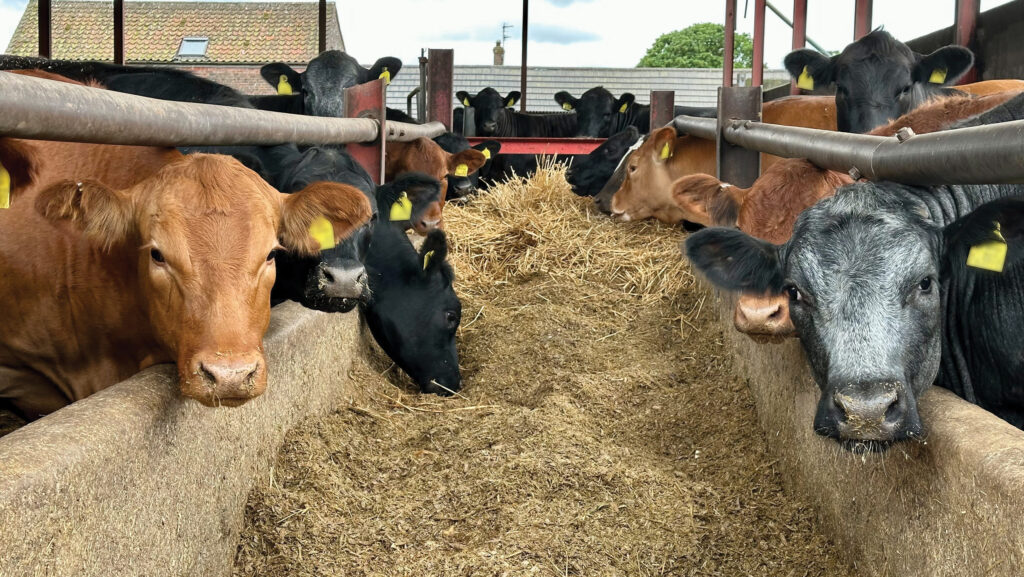 © MAG/Judith Tooth
© MAG/Judith Tooth Less reliance on bought-in cereals and greater use of home-grown forage in cattle rations, as well as a sharper focus on herd health, are driving down greenhouse gas emissions from a breeder-finisher unit near Skegness.
At 14.9kg carbon dioxide equivalent (CO2e)/kg deadweight, the carbon footprint of the suckler herd at Chestnuts Beef, Burgh le Marsh, is 47% lower than the Agrecalc Cloud enterprise average for spring-calving lowland suckler cows (27.94kg).
The finishing unit’s footprint is 22% lower, at 14.27kg CO2e/kg deadweight, compared with the farm carbon calculator’s average of 18.4kg.
See also: Carbon footprint study shows scope for beef and sheep efficiency gains
The herd, run by Claire Wilson in partnership with her father, Mark Mackinder, is one of 354 farms involved in the UK-wide Programme for the Improvement in Sustainability of Red Meat (Prism) study.
Farm facts
Chestnuts Beef, Burgh le Marsh, Lincolnshire
- 142ha permanent pasture
- 142ha arable, including herbal leys, low-input spring cereals, wholecrop and legume fallow
- Countryside Stewardship, Higher Level Stewardship and Sustainable Farming Incentive
- 260 suckler cows transitioning to all-spring calving
- Flying herd transitioning to breeding replacements
- Supplies finished cattle to Woodheads, Spalding; Dunbia, Bridlington; and ABP, York
- Holiday cottages
- One full-time stockman plus part-time help with cattle, fencing and hedging
Launched in late 2022 by ABP with consultants the Andersons Centre and Harper Adams University, the first round of Prism results revealed a huge variation in greenhouse gas emissions between farms.
While Agrecalc’s methodology has been updated since the first round of calculations, an averaging exercise suggests the combined carbon footprint for Chestnuts’ suckler herd and finishing unit is down by 56%.
“It’s early days, but there’s definitely been an improvement,” says Claire.
Carbon hotspots
According to Andersons, there is a strong correlation between efficiency, profitability and low carbon emissions.
The lower the carbon footprint, the more effective inputs have been at generating saleable product.
Tailored advice is provided to help each participating farm identify its own “carbon hotspots”.
For Claire, who took over management of the suckler herd on the 284ha (700-acre) family farm three years ago, this process has helped give it a fresh start.
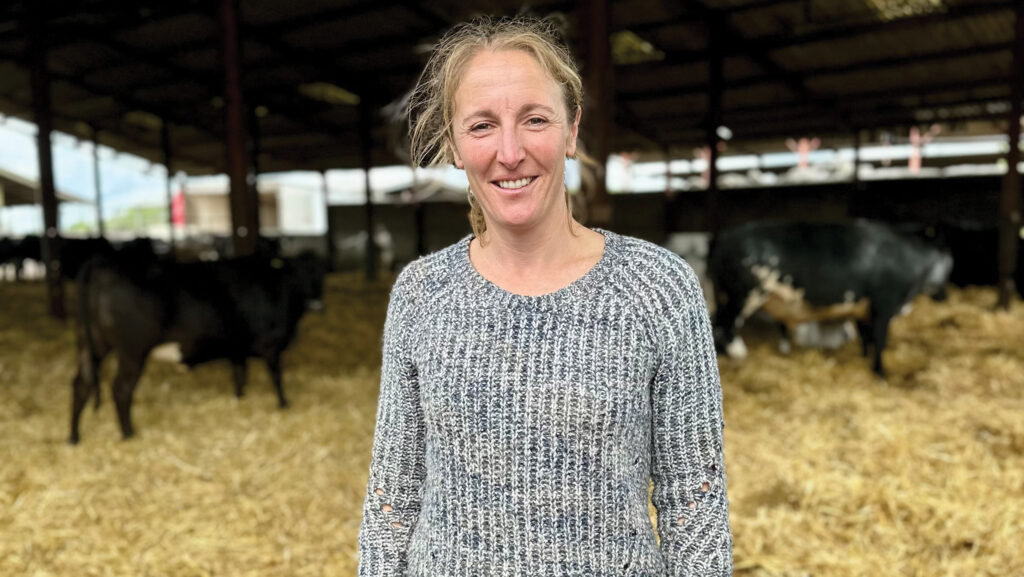
Claire Wilson © MAG/Judith Tooth
“Dad had been running a flying herd of about 100 cows with a bit of everything, including cows and calves from dispersal herds,” she says.
Advice for Chestnuts following the second round of carbon footprinting focuses on four areas across the whole beef enterprise: herd health, grazing management, feed rations and age at slaughter.
Herd health
Claire is shifting the calving pattern from spring and autumn to spring only, to simplify management and handling.
“If cows calve at the same time, they can be weaned, vaccinated and so on at the same time,” she reasons, adding that spring calving will also make better use of early grass, especially on the marshes where the well-drained, heavy soils retain moisture.
The herd is now vaccinated for bovine viral diarrhoea (starting 2024) and all calves are tagged and tested.
Calves are vaccinated for blackleg at turnout and wormed before moving to the finishing unit at nine months of age.
The flying herd is being gradually culled, while herd size has increased to raise productivity.
Herd replacements are now being home-bred, boosted by buying 100 Belgian Blue cross Holsteins from a single herd dispersal in February this year.
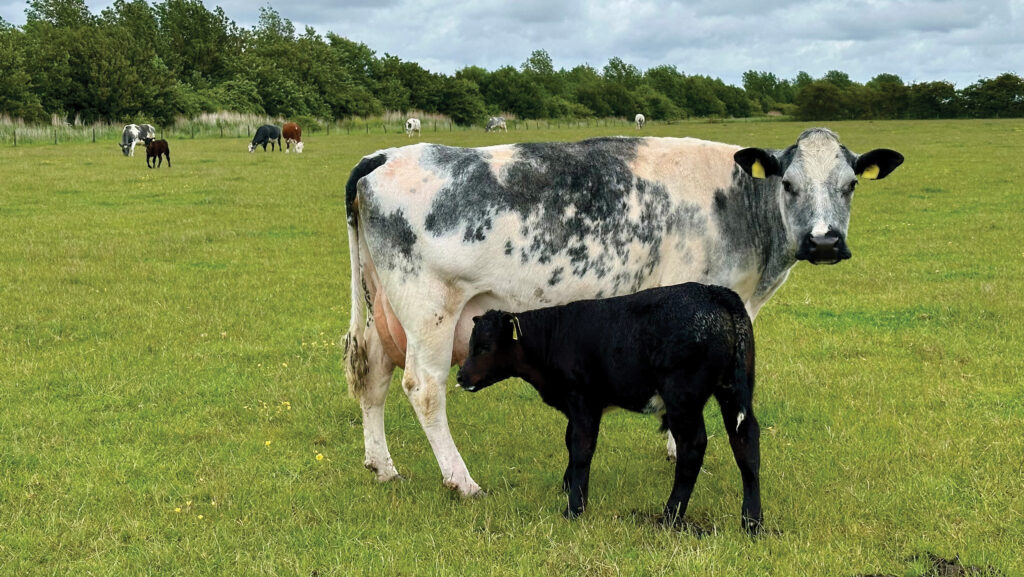
© MAG/Judith Tooth
“I’ve realised the importance of good breeding stock for efficiency,” says Claire.
“The Belgian Blues are quite big, and they need a lot of energy, so they’re not ideal, but it was a good opportunity to buy a herd, and they’re nice, milky cows.
“I think they’ll be great to produce the next generation from – they’re producing good calves.”
Bulls run with the herd from 14 April to 14 July. Angus bulls are used with the Belgian Blue-crosses to produce herd replacements, with Limousins on the remainder of the flying herd and a separate group of 40 Stabilisers.
“I’m looking to purchase a Stabiliser bull so I can retain calves for a Stabiliser herd to produce maternal, milky cows and easy-finishing cattle,” Claire adds.
Herd mortality, at 3.27%, is higher than the Agrecalc average of 1.82%.
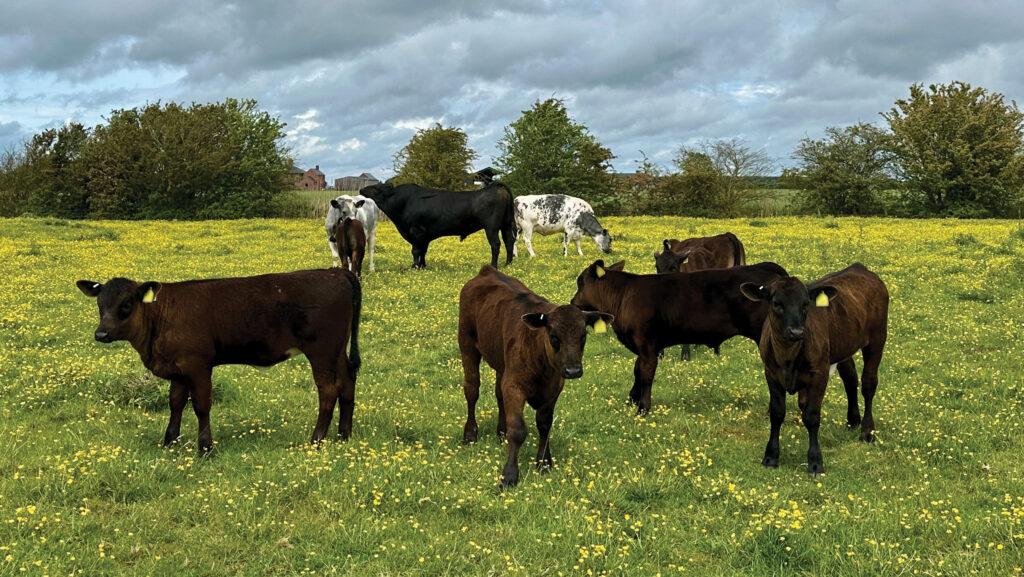
© MAG/Judith Tooth
However, she says this reflects the ageing herd at the time of data collection and is confident the largely younger herd now on farm will bring this figure down.
Grazing management
Cows and calves are turned out by mid-April. Claire is not yet persuaded by advice to introduce rotational grazing, citing time and infrastructure constraints.
Instead, she is running the herd in groups of 35 cows, moving each group between adjacent fields or blocks of land split in two.
However, she plans to apply for a Farming Investment Fund grant towards electric fencing to improve grazing management on the 40ha (100 acres) of herbal leys – now in their second year – in the farm’s arable rotation.
“One of the [early] recommendations to improve carbon footprint was to better integrate the arable and livestock enterprises,” she explains.
Feed rations
As well as introducing herbal leys, Claire has reduced the proportion of bought-in cereals and increased the use of home-grown feed at the finishing unit.
This has saved £160,000 on purchased cereals in the past year. Rations now comprise a 50:50 mix of bought-in cereal-based meal and home-grown rolled barley, wholecrop barley, waste vegetables and ad-lib straw.
The use of by-products takes advantage of the farm’s location in a vegetable-growing area.
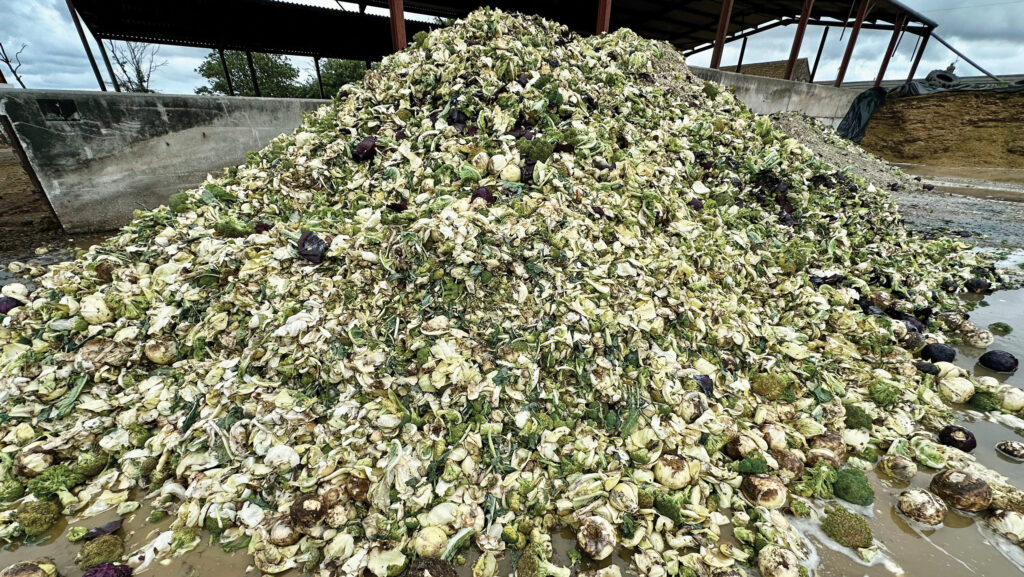
© MAG/Judith Tooth
“We’ve been getting an artic load of waste veg each week for years – oversized broccoli heads and stalks, cauliflower leaves, some cabbage, as well as a load of raw-cut chips. It’s like rocket fuel.
“We also get vining peas – enough for seven months but delivered in a six-week period. They’re high in protein and we can store them,” she says.
Age at slaughter
Average age at slaughter is 21 months, and Prism advice is to reduce this – even a reduction of two to three weeks can have a significant effect on emissions, according to Andersons.
However, this average includes the 16-18-month-old dairy cross beef cattle bought in each autumn to finish in 120-150 days. These currently number 350-400 a year.
By contrast, cattle coming from the suckler herd finish more quickly: 14-15 months for bulls – they grow “like stink”, says Claire – and 18-20 months for heifers.
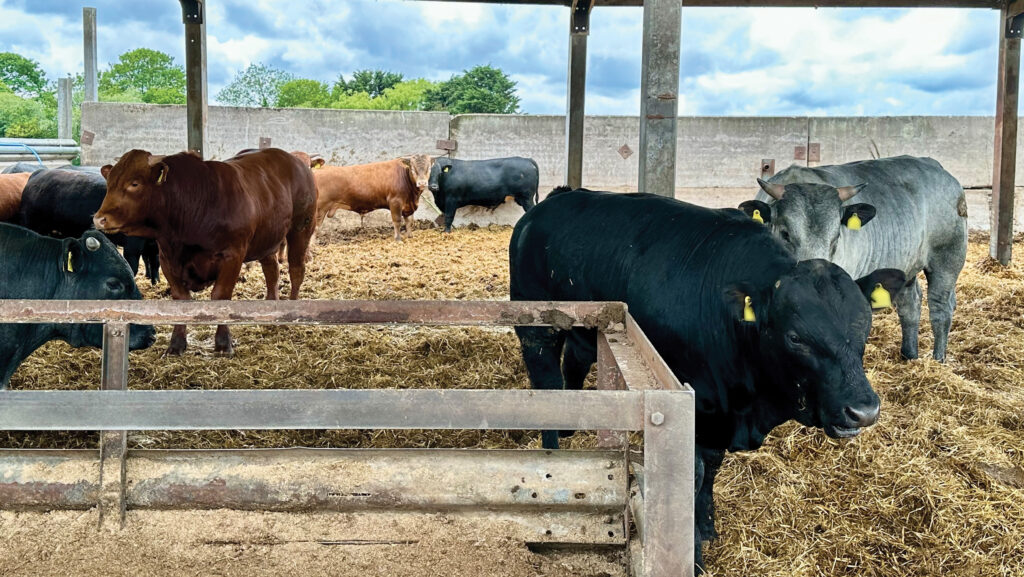
© MAG/Judith Tooth
Average daily liveweight gain across the unit is 1.5kg.
Bought-in stores will decline as greater numbers bred from the suckler herd feed through into the finishing unit, she points out.
However, Claire has started creep feeding from three months of age.
Calves will be weighed before weaning in late October to monitor progress.
“Hopefully, we will see a slight reduction in age to slaughter from early creep feeding when [feed] conversion rates are high,” she says.
Data collection has been helped by a £1,000 grant received through the Prism project, which Claire put towards an electronic identification tag reader and weigh head.
Other measures
Savings of £30/week on diesel have been achieved by running a Fiat Panda 4X4 instead of a pickup to check stock.
And capital grants are helping cover the cost of laying hedges planted 20 years ago and renewing fencing alongside hedges and drains. New hedges are also being planted – 600m last winter.
